| Early Spring Date: | April 25 |
| Late Spring Date: | May 31 |
| Best Dates to See in Spring: | April 30 - May 25 |
Spring: Chestnut-sided Warblers are common at Monticello Park, especially during the second and third weeks in May. They winter in Central America and the Caribbean, and they usually nest in Canada, the northern United States, and the Appalachian Mountains. They also nest in parts of Maryland.
Fall: An average of three dozen Chestnut-sided Warblers are seen at Monticello each fall. They are most common during the first two weeks in September.
Where to See Them in the Park
Chestnut-sided Warblers usually forage in bushes and low in trees. They frequently go into the stream to bathe and drink.
Physical Description
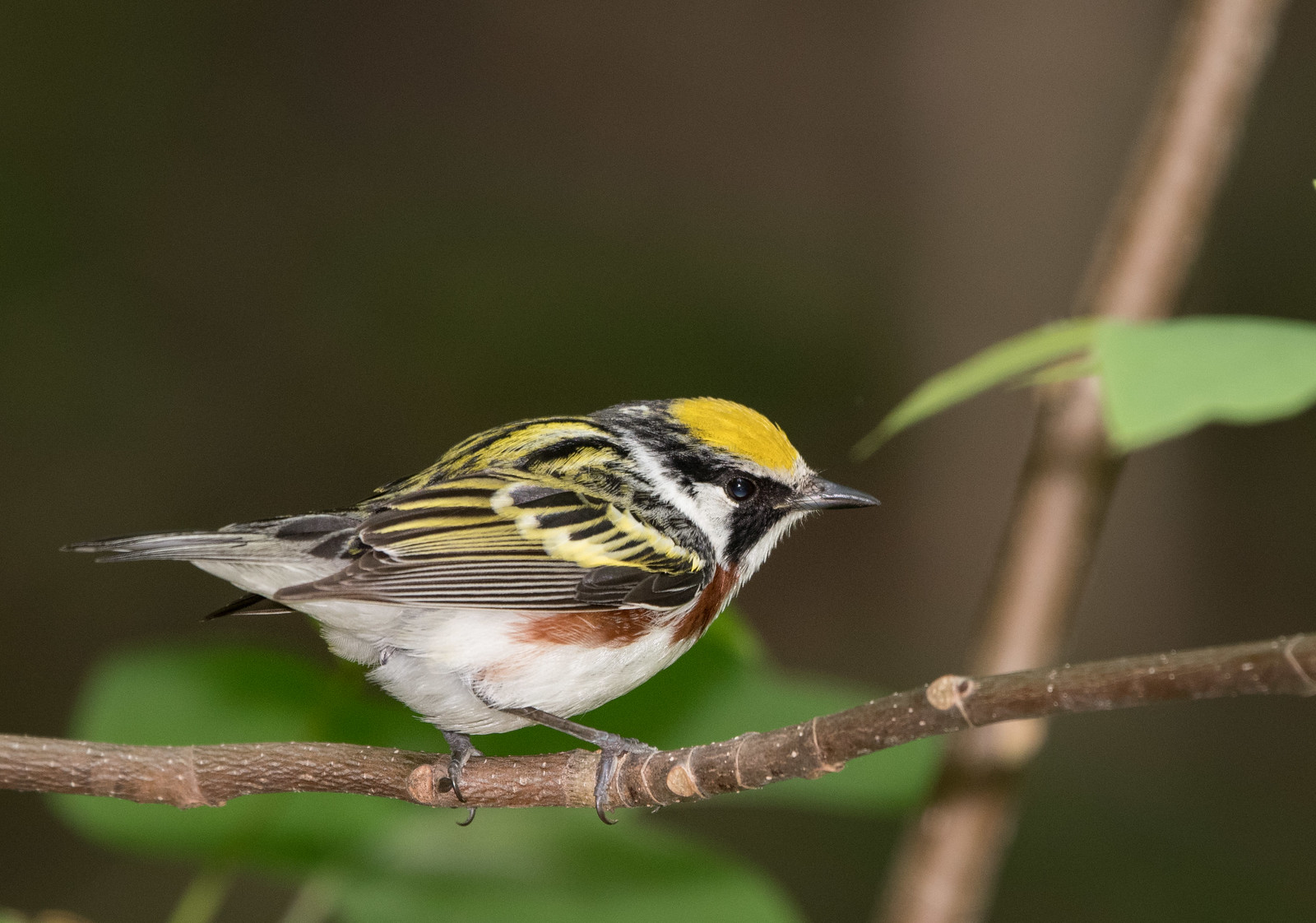
Chestnut-sided Warblers look very white. They have a chestnut line on each side of their white breast. The length and thickness of the chestnut varies among individual birds. The black eyeline and malar stripe form a V around the eye.
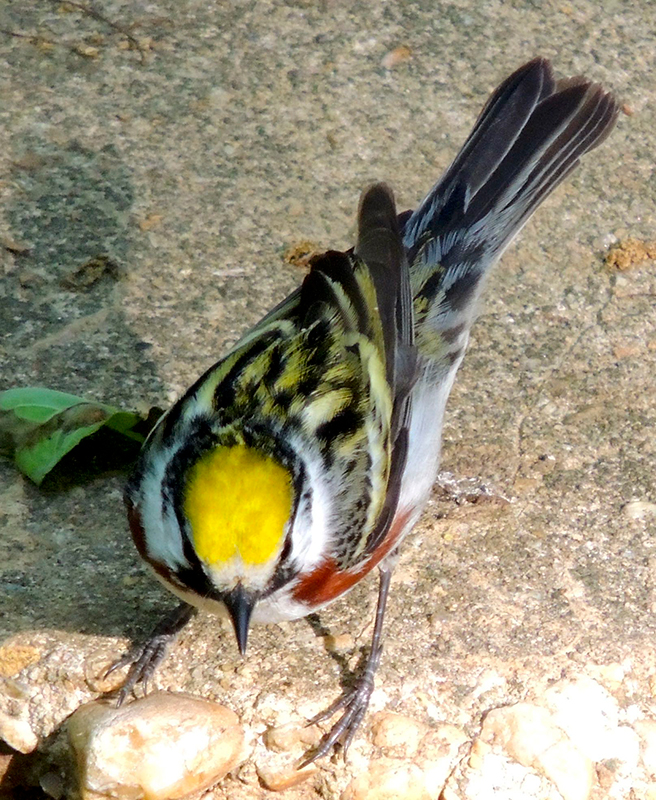
The males have a yellow cap, and the stripes on the back are black and greenish-yellow. They have varying amoung of chestnut on their flanks.
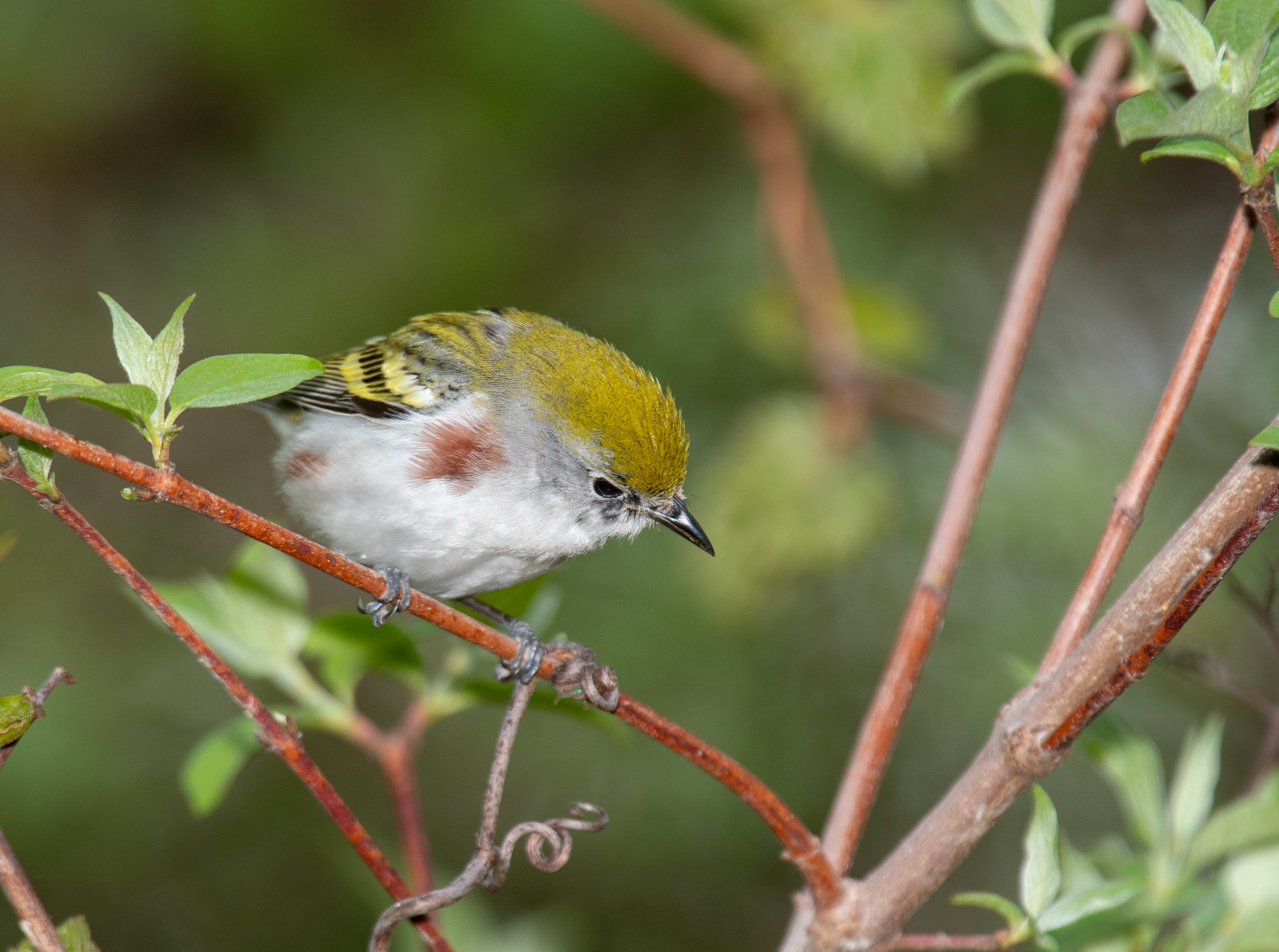
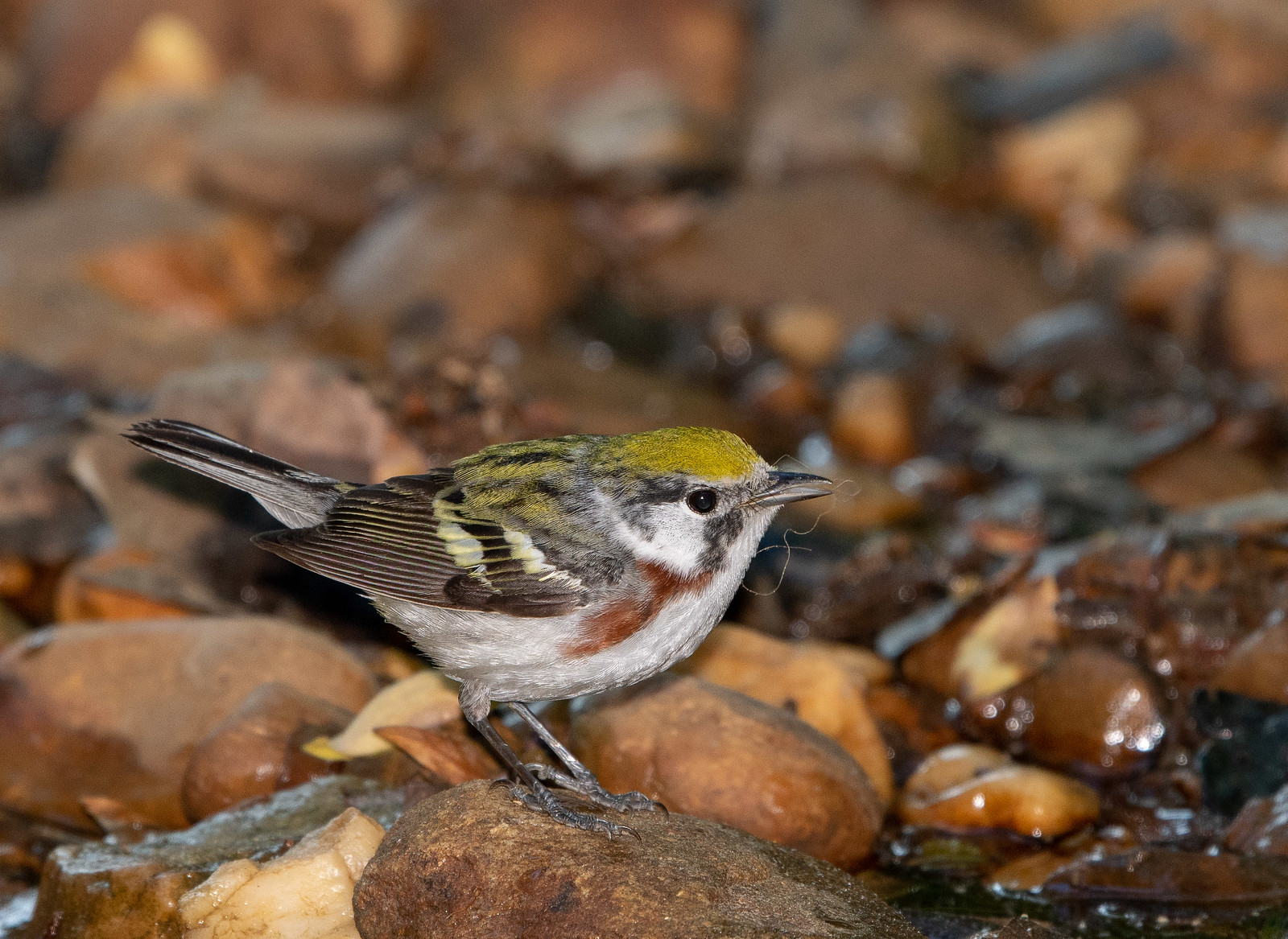
Females look duller and do not have as much chestnut on their flanks. Their cap is more greenish-yellow than bright yellow, and the black markings on the face are not as pronounced. Both the male and the female have two whitish-yellow wingbars.
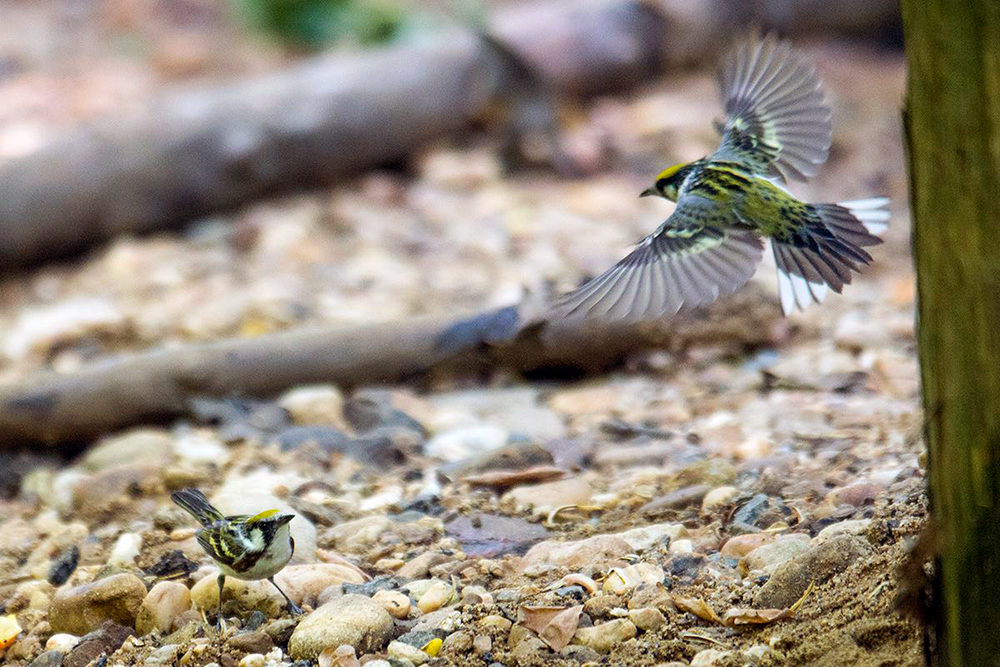
On flying birds, you can see the pattern of stripes on the back as well as the white tips on the three outer tail feathers on each side.
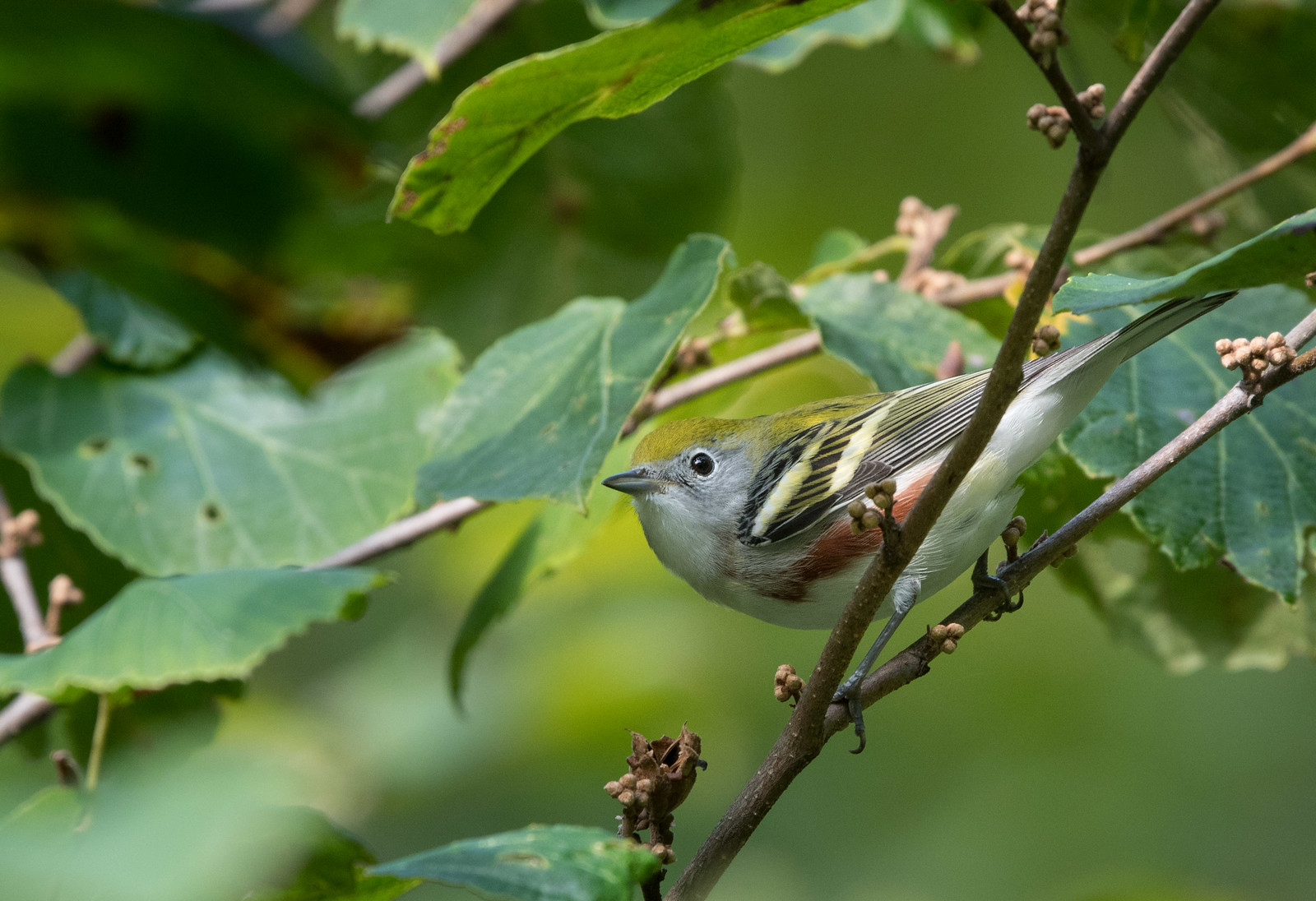
Fall: Fall Chestnut-sided Warblers in almost all plumage have a yellow-green cap and a gray face with no black on it. The fall males still have some chestnut on their flanks
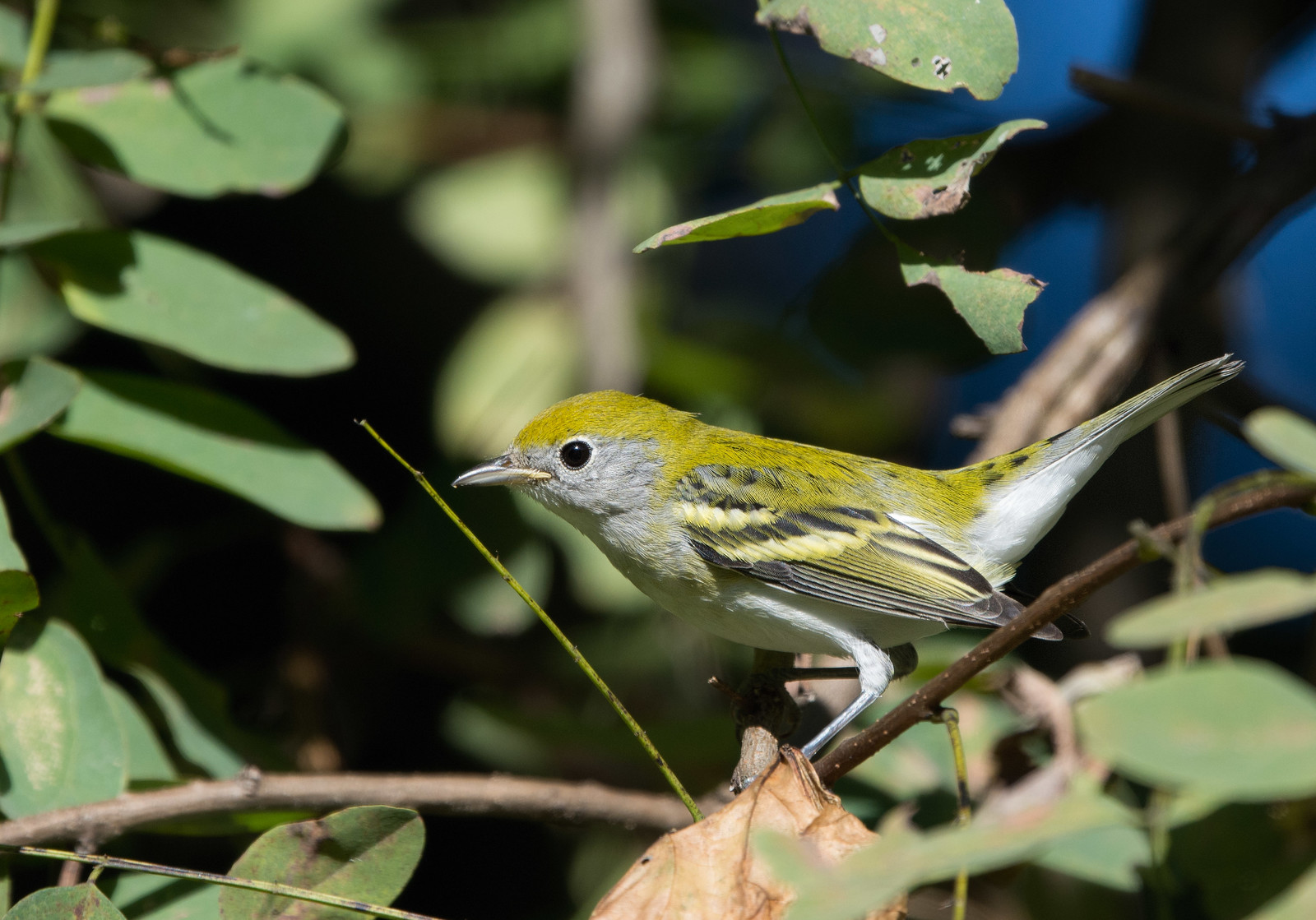
Fall adult females resemble the first-year birds of both sexes. Some fall first-year females are very dingy.
Vocalizations
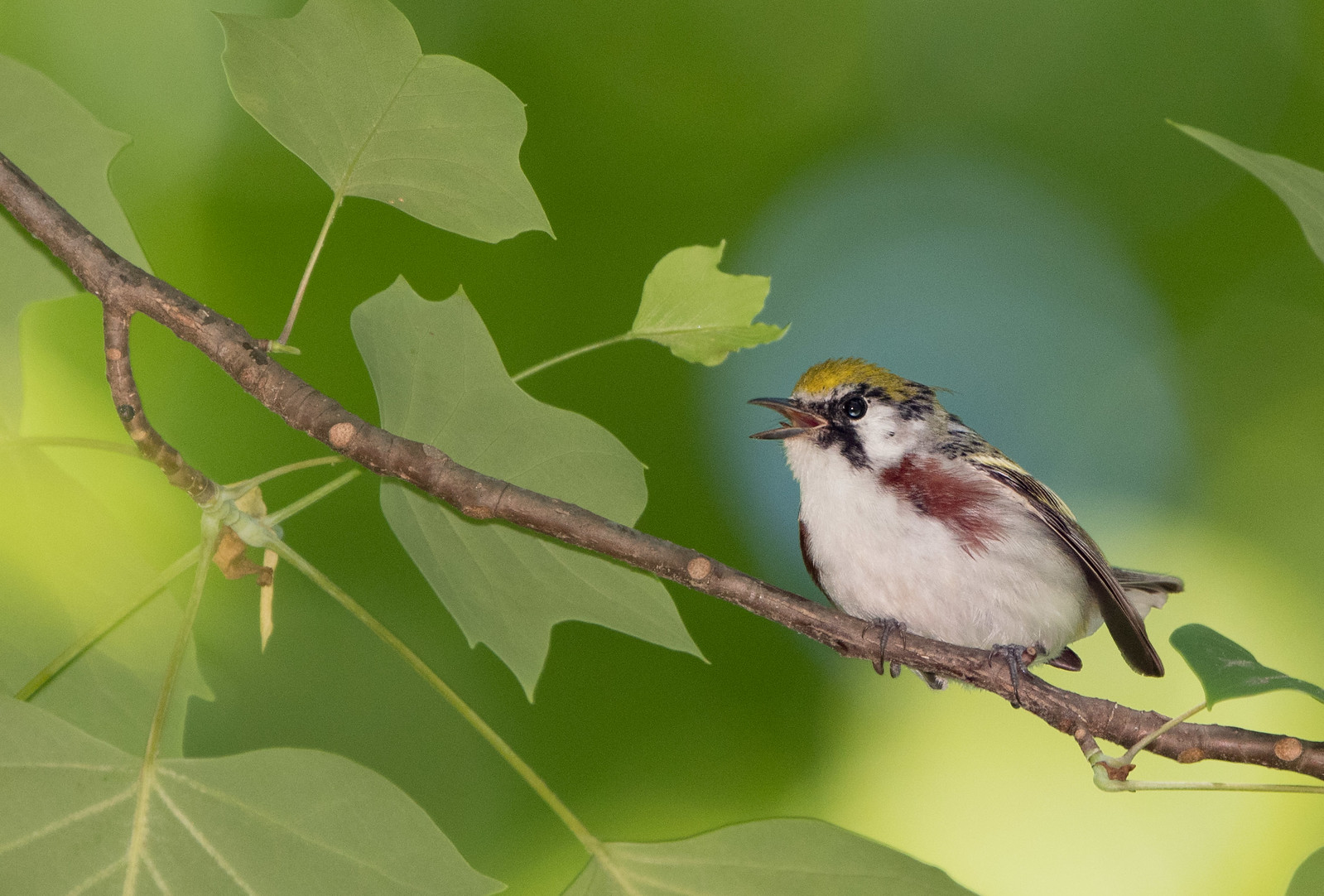
One of the songs of the Chestnut-sided Warbler is a friendly Pleased-Pleased-Pleased-to MEET-cha. One of the songs of the Magnolia Warbler tends to be a shorter version of this, and the Chestnut-sided sometimes sings a shortened song that sound like a Magnolia's.
Hear the vocalizations of the Chestnut-sided Warbler.
Notes
The specimen from which the Chestnut-sided was named came from Pennsylvania, but Carl Linnaeus misspelled the scientific species name pensylvanica in 1766 — the Penn in Pennsylvania is spelled with two N's. John James Audubon had trouble finding Chestnut-sided Warblers. In 1812, he wrote: "In the beginning of May 1808, I shot five of these birds, on a very cold morning, near Potts-grove, in the state of Pennsylvania....I have never met a single individual of this species since".
Origin of Names
Common Names: Chestnut-sided from the plumage. The New World Warblers were named for their similar appearance to European warblers, to whom they are not related. Most of the New World warblers do not warble (sing continuously with notes that change frequently).
Genus Name: Setophaga means moth eating.
Species Name: Pensylvanica means from Pennsylvania, where the first specimen was recorded.
Chestnut-sided Warbler video footage
Return to the Index
